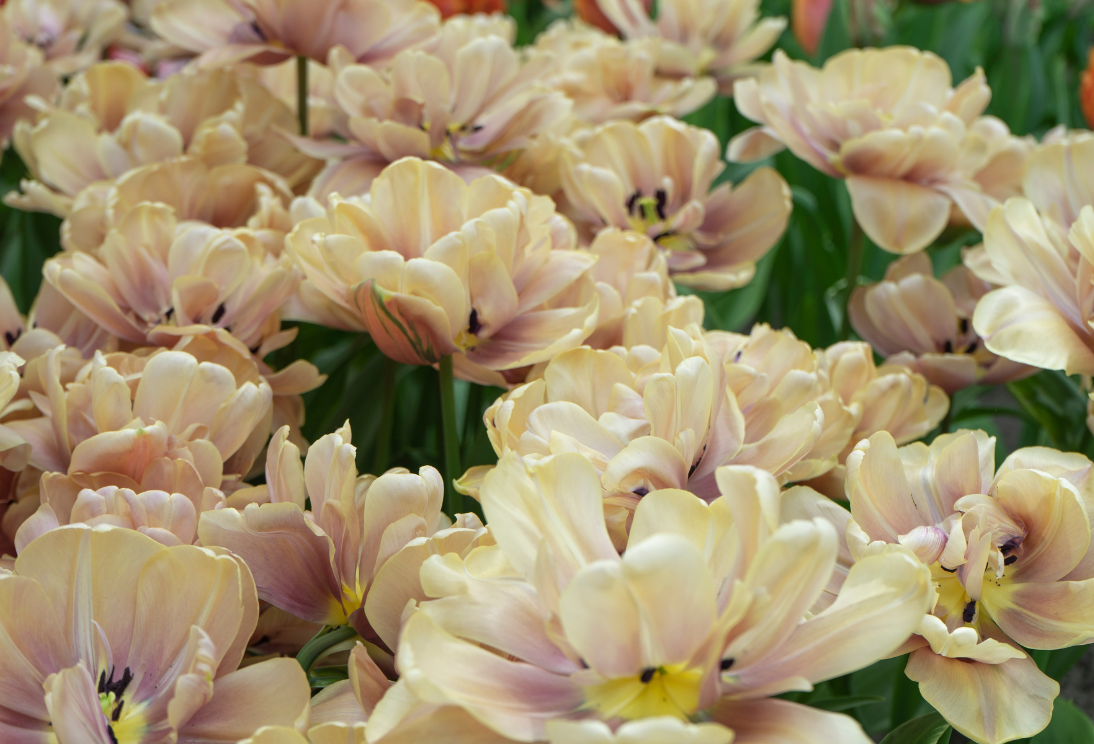
May: Garden tips for caring for flower bulbs
|
Tijd nodig om dit artikel te lezen: 4 min
|
Tijd nodig om dit artikel te lezen: 4 min
The garden is getting greener and greener, the seedlings are growing like roof tiles and the Ice Saints are in sight. The month of May is by far the busiest month in the entire garden season. There is an incredible amount that can be sown directly, we can already enjoy summer temperatures now and then and the first crops can already be harvested. May is therefore a busy month, but do not forget to regularly enjoy all that beauty in the garden.
Halfway through May the time has finally come: the ice saints are here. This means that the risk of night frost in our regions is over and many frost-sensitive plants can therefore be given their permanent place in the garden. Dahlias can be planted, tomatoes can go into the greenhouse and you can sow directly in the open ground. Be careful not to just move all the plants outside, make sure that the plants are hardened off first. You can do this by putting the plants outside in the garden on a sunny day and extending this every day. Let them get used to the conditions outside for a night as well. This way the plants get used to the conditions outside: think of wind and bright sun.
Clean the drinking bowls for the garden birds. It can be quite warm at times, so the birds will be grateful for a splash bath. If necessary, place stones or branches in the bowl, so insects can escape and you prevent them from drowning.
The warm temperatures also affect the weed seeds awake in the garden. Do a weekly weeding round, so that the unwanted herbs in the garden remain within limits. You can easily pull out or cut off unwanted shoots from raspberry bushes when they are still small, but watch out for the thorns.
The most garden birds are busy building nests, laying eggs or taking care of their young. So they need some power food to bring everything to a successful conclusion. Therefore, put some mealworms on the feeding table in the garden: they will be grateful for the extra food source.
Dahlias can be planted in the open ground after the Ice Saints. Plant them with some compost in a sunny spot in the border and water well. Watch out for snails: they are after all very fond of the young fresh leaves.
How beautiful the flower bulbs have also flowered recently, for some species the season is now really at its end. Did you plant them in the open ground and do you want them to return to the garden next year to give the best of themselves? Then definitely do not cut them off, the bulb needs all the energy to flower again next year. Because the leaves serve as a kind of solar panel, they should definitely not be removed. Let them die off quietly, so the bulb can prepare itself well for next season. Another small extra tip: it is best to remove the faded flower heads. This way the flower bulb does not put energy into creating seeds. A small exception to this are tulips. Most tulips give the best of themselves in the first year, but this decreases year after year. We therefore recommend treating cultivated tulips as annuals. If the tulips have finished flowering or are ready to harvest, you can pull them out of the ground with the bulb. This also gives you longer stems to put them in a vase. You can of course leave naturalising tulips in the garden, they multiply every year in the garden.
Did you know that we also have a well-stocked YouTube channel? With over 450 videos, we have a large database of information. Be sure to check it out on YouTube and subscribe to stay up to date with the latest videos.
In this video Angelo teaches you how to plant dahlia tubers directly in the full ground can plant, the ice saints is after all in sight.
Due to the warm temperatures and beautiful days, the aphids awake. These small herbivorous insects mainly target the young fresh plants in the spring, with all the consequences that entails. They are very useful in the garden, after all, they serve as food for garden birds and other insects. It is therefore better not to combat them, but fortunately there is an easy solution to deal with this: place decoy plants in the garden. These decoy plants are extra popular with aphids and attract them. The aphids will therefore mainly eat the decoy plants, which keeps your other plants free of aphids. An additional advantage is that you attract small garden birds, which in turn eat snails and other pests.
Without insects there will unfortunately never be pollination of all the beautiful flowers and beautiful crops. It is therefore important to give even the smallest insects a place in our garden. You can easily provide this by hanging an insect hotel, but there are many other options to provide this in the garden. Think of a pile of branches, a messy corner with pruning waste at the back of the garden or a few stones in a pile to create a sheltered spot.
If you would like to make an insect hotel yourself, you can even make creative use of waste:



